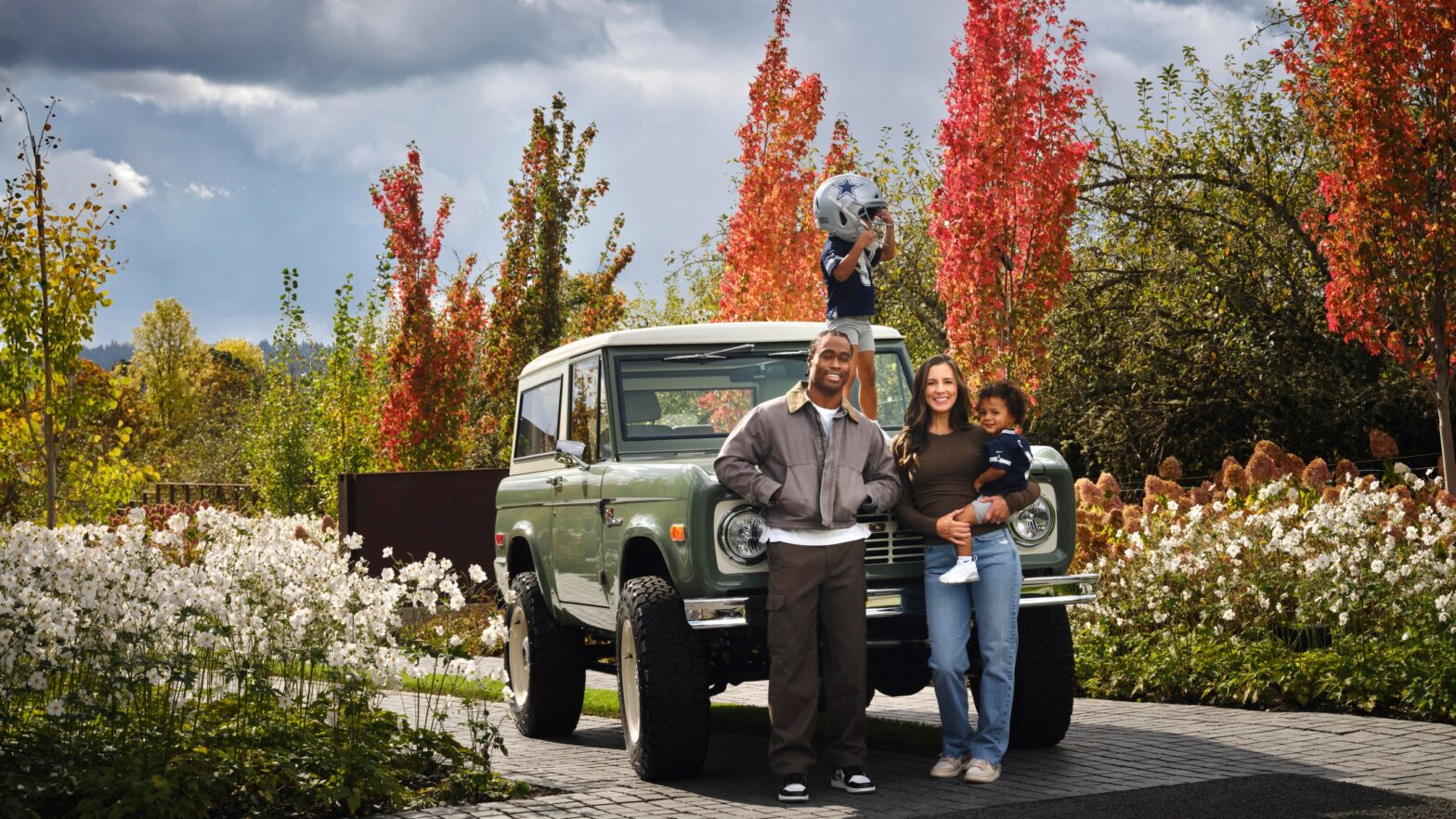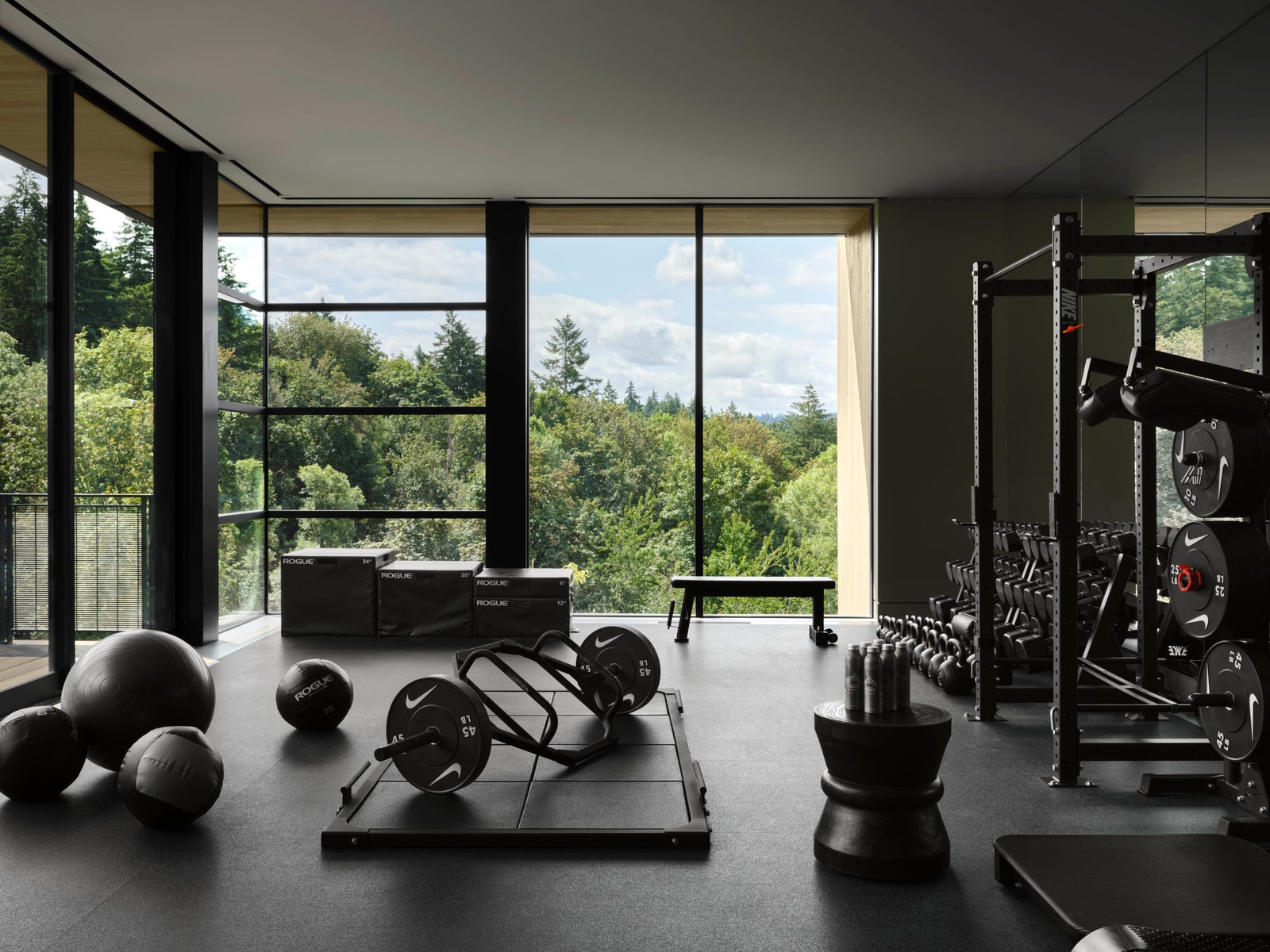Ultimately, the company decided to alleviate any sense of austerity by finding ways to divide the larger spaces into more intimate areas. “We created privacy elements throughout the house,” he says. “This intentionally added a layer of texture and warmth and helped give the whole thing a feeling of coziness.” They also used a color palette with lots of greens, like in the moss-colored dining room; and the common areas feature oversized, curved furniture, much of it upholstered in inviting, nubby fabrics that are the opposite of clinical.
The house serves a dual purpose: it is a home for the family and a place where Brandin can train when he is not in Dallas with the team. To that end, perhaps the most beautiful weight room in the home is located on the ground floor, with sweeping views of the property's mature pine trees. “I wanted the guys to come in and out because I spend so many hours there,” Brandin says. “But because it's at the other end of the house, it can get as loud as it wants with music, even during nap time.” And at the other end of the spectrum is the playroom, with its eggplant and plum tones (and a window into one Garage with Brandin's car collection) the ideal place for parents and children to gather to watch a movie or “just stay there, get messy and don't let it overwhelm you,” he says.
The Cooks family home may have both sides of some dualities – elegant and cozy, family-friendly and professional – but the ultimate goal for the architect, designers and clients was to create a transcendent space. “We knew that because of Brandin's schedule, they might not live in this home full-time for several years,” says Suzie Lucas. “So we didn’t want it to conform to too many trends; It has to stand the test of time.” And while this home was obviously designed for a specific family with special needs, many of its elements – the classic-modern floor plan, the warm tones – are timeless. A forever home indeed.

